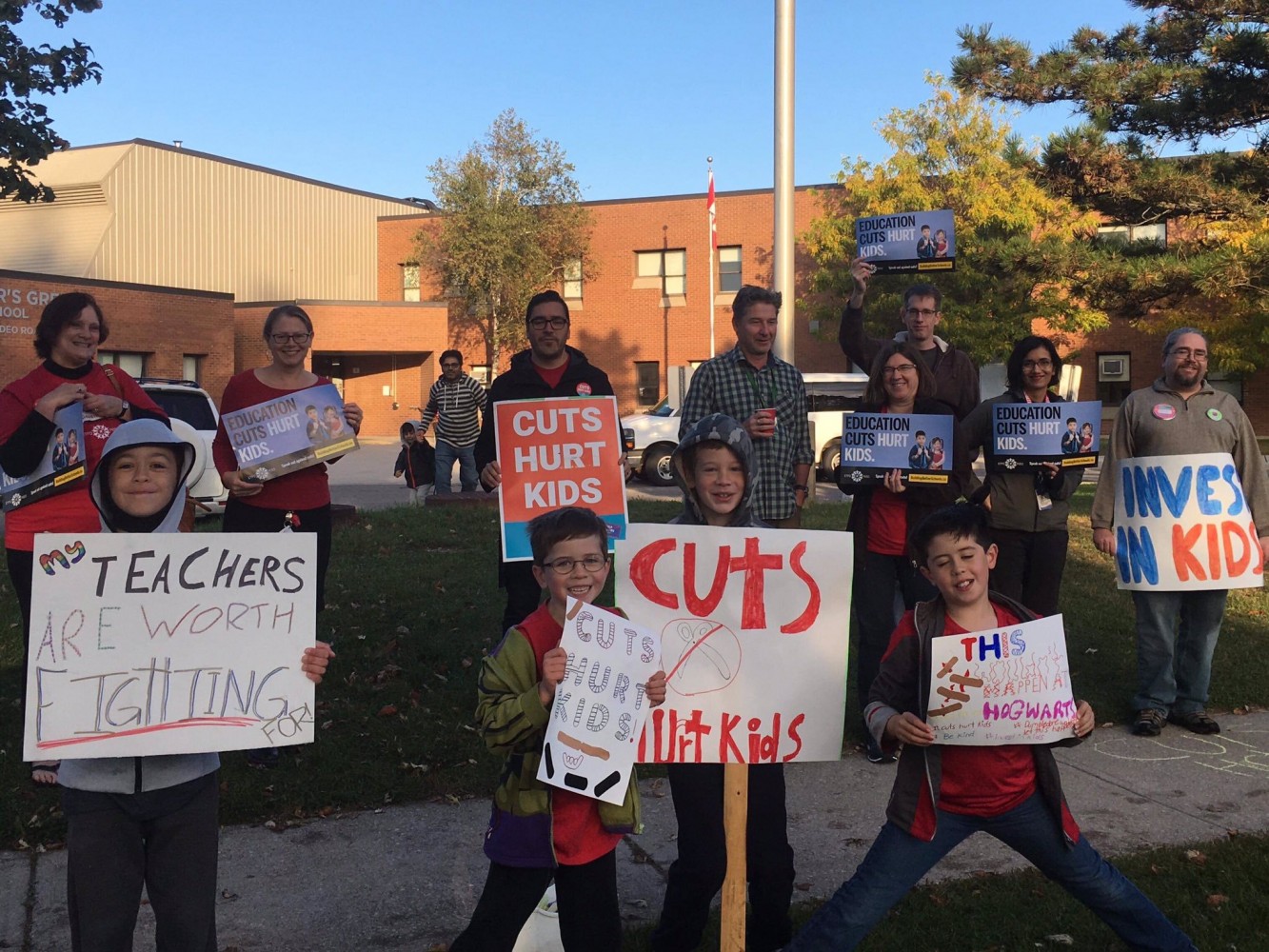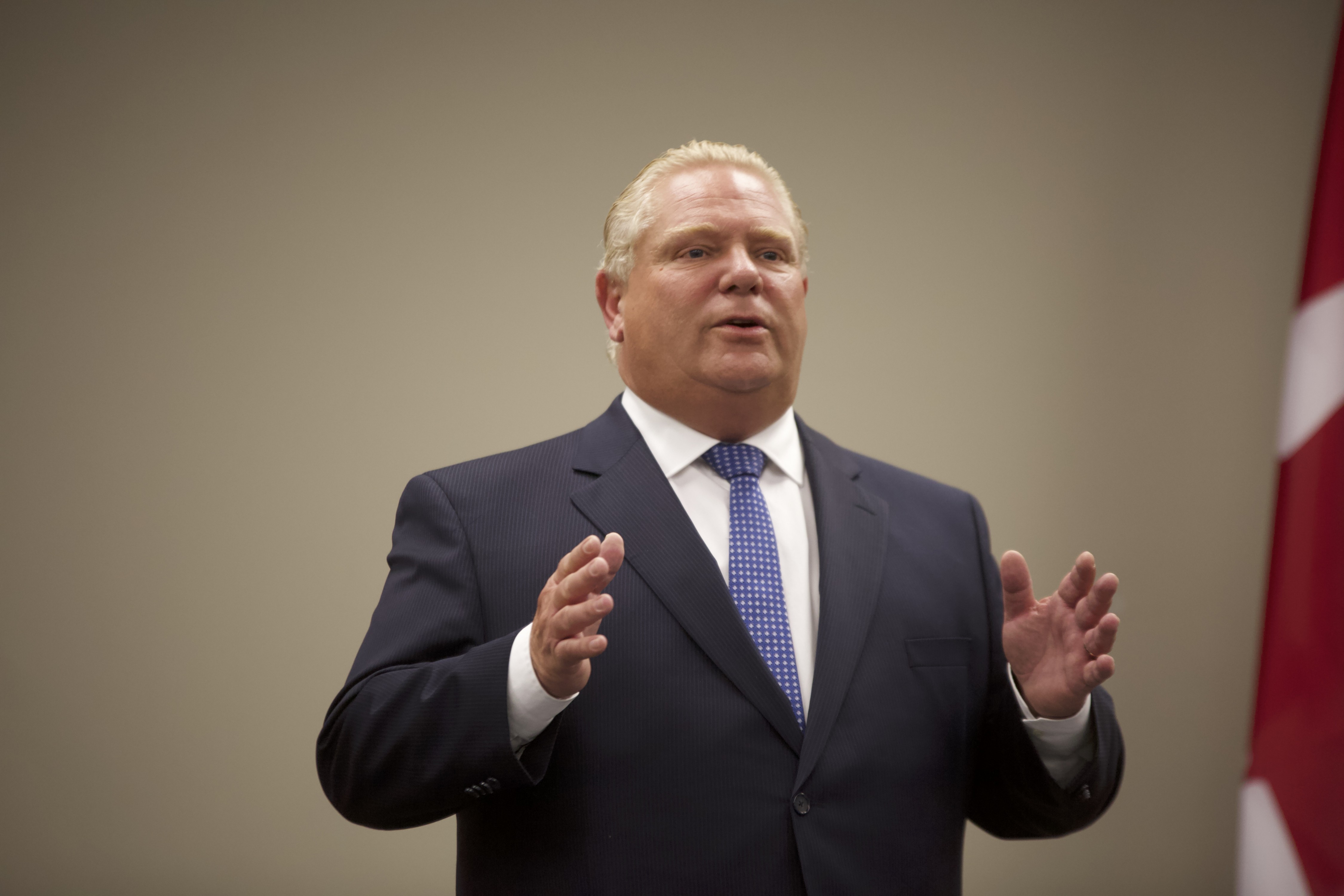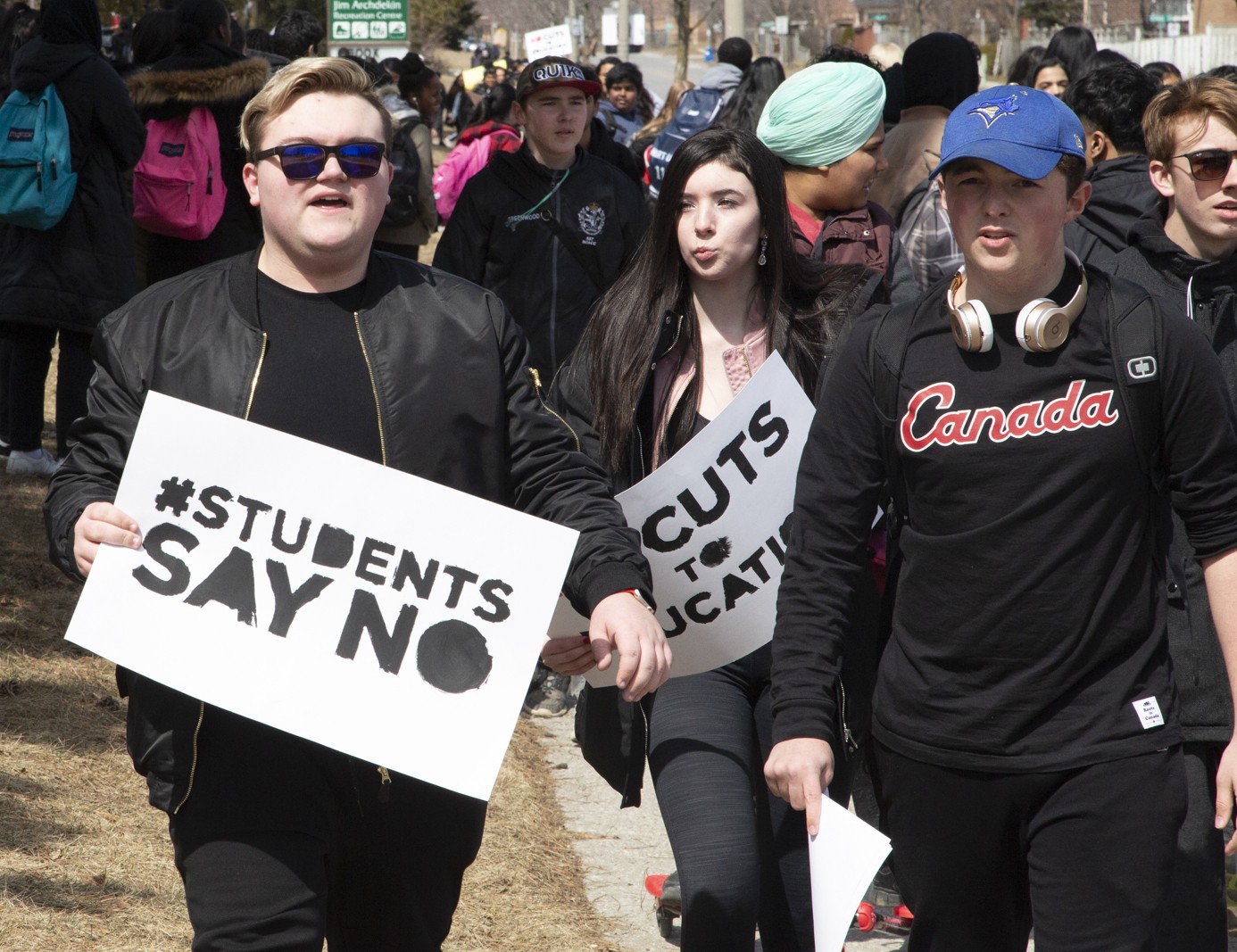
Peel teachers say debilitating class sizes the ‘biggest issue’ behind walk-in protest
On Thursday morning, a group of parents and a few children lined the sidewalk and lawn outside Settler’s Green Public School in Meadowvale, bearing signs that read “Cuts Hurt Kids,” and “Teachers Worth Fighting For” during a day of provincewide “walk-in” protests.
Felipe Pareja, vice-president of Peel’s branch of the Elementary Teachers’ Federation of Ontario (ETFO), held a coffee mug as he watched the demonstration unfold.
“These things are powerful,” said Pareja, also a parent of a Grade 4 student at Settler’s and a teacher at Meadowvale’s Lisgar Middle School. “These walk-ins are powerful because they have truly been parent-led.” Pareja was out at 7:45 a.m. planting ETFO lawn signs in the area.
As a parent and a teacher, Pareja sees the province’s cuts to education in the past year from both perspectives. Pareja said, as a teacher, one of the main issues for him is the state of class sizes. “Conservatives love to talk about the fact that the jury is out on the connection between low class sizes and student success,” he said. “It doesn’t take a genius or a rocket scientist to know that if you just simply have fewer kids in a class, that the one person standing at the front of that class is going to have that much more ability to spend individualized time and give individual attention to students in the classroom.”

Premier Doug Ford, whose government has made significant cuts to education in the past year
Earlier this year, the provincial government mandated school boards to start increasing high school class sizes from 22 students on average to 28. For students in Grades 4 to 8, class sizes are to increase from 23 to 24 students. Following public outrage, the government developed a $1.6-billion fund for school boards to ensure no teachers were laid off.
Pareja said his son has had a really great experience at his school, though the class sizes are “probably a little bit higher than ideal.”
“You wonder whether if there were four, five fewer students in that classroom, whether [the teachers] would be able to spend a little bit more time with each of them reviewing the math, reviewing the language, editing their writing with them, sitting with them with a book in between the two of them reading,” he said. “That’s kind of what we’re up against.”
In an attempt to get the province’s debt under control, which for the 2018-19 fiscal year was more than $338 billion, the Ford government has made significant cuts to education in the past year. Those include removing a $100-million fund designated for school repairs due to the cancellation of the cap-and-trade system, scrapping $25 million from a fund for specialized programs in elementary and secondary schools and increasing class sizes.
Drazen Bertovic, a Grade 12 teacher at Mississauga-based Glenforest Secondary School, said he’s also felt the effects of an increase in class sizes. It’s part of the reason why he, along with approximately 50 of his colleagues, participated in a morning walk-in protest on Thursday.
“The biggest issue right now that we’re struggling with, as a group, is this idea of ‘28 to 1,’” he said. Bertovic noted that the public often misunderstands this figure, believing classes have exactly 28 students when they can contain more. “This is the size of the average class. And in a time where we have more and more needs for kids, including mental health, it really limits what we can do with our kids and how we can help our students.”

Students in Brampton protest earlier this year over cuts to education by the provincial government.
Bertovic made his remarks on World Mental Health Day, when the province’s education minister Stephen Lecce announced an investment of nearly $40 million to “advance student mental health” in conjunction with education groups.
Bertovic said he and his fellow teachers participated in the walk-in from 8 a.m. to 8:15 a.m., when school officially starts. The teachers met in front of Glenforest wearing red shirts, which Bertovic said are normally worn every Friday to “champion the education system,” he said. “It’s red for ed,” he explained.
At 8:15 a.m., he said, “we walked in as a cohesive group just to let kids and the parents driving up know that we believe there’s some issues with our education system.”
After negotiating with education support staff for the better part of September into early October, Round 2 is set to begin. The province will now have to turn to contract negotiations with other education unions, among them the ETFO. Throughout the month of October, members from ETFO’s 76 local offices will vote on whether to strike in case negotiations break down. A tentative agreement was reached this past Sunday between CUPE, the education workers it represents, the province and the Council of Trustees’ Associations.
As to where things stand now between the province and the education unions, “bargaining is happening,” Pareja said. A strike vote is planned for Oct. 23 with the Peel teachers’ local of ETFO.
Email: [email protected]
Twitter: @dancalabrett
Submit a correction about this story


